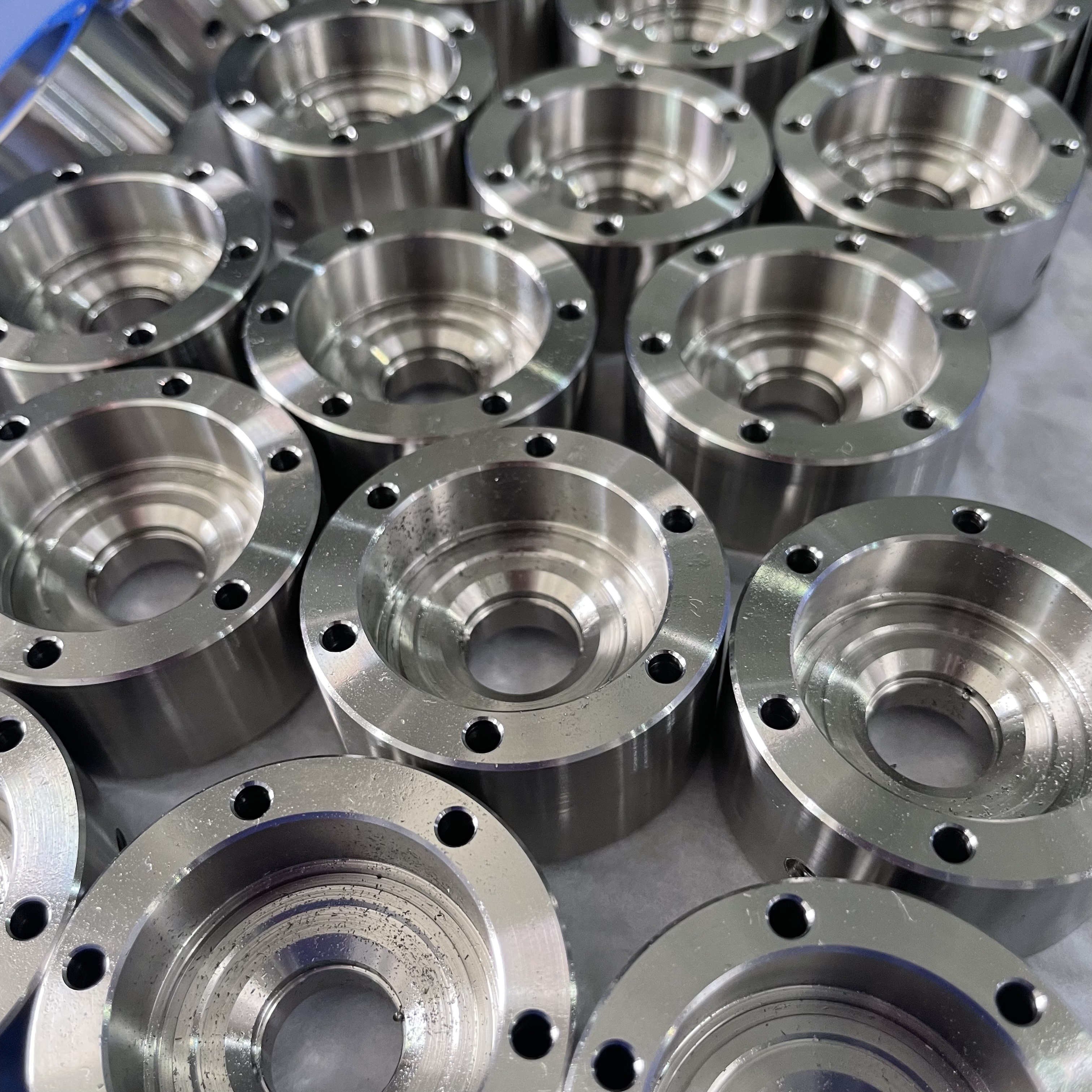6082T6 Material vs. 6061-T6 Aluminum: What You Need to Know

Introduction to Aluminum Alloys
Aluminum alloys play a pivotal role in various industries due to their exceptional properties and versatility. The Significance of Aluminum in Industry is underscored by its widespread use in sectors such as aerospace, automotive, construction, and consumer electronics. Its lightweight nature, coupled with high strength and corrosion resistance, makes it an indispensable material for modern manufacturing processes.
One crucial aspect that enhances the properties of aluminum alloys is the T6 Heat Treatment. This heat treatment process involves solution heat treatment followed by artificial aging, resulting in improved strength and hardness. The T6 treatment also enhances the alloy's resistance to stress corrosion cracking, making it highly desirable for critical applications where structural integrity is paramount.
Understanding 6082T6 Material
Alloy 6082T6 material is a highly sought-after aluminum alloy renowned for its exceptional properties and wide-ranging applications. This medium strength alloy offers remarkable strength and durability, making it an ideal choice for various industrial needs. Additionally, its outstanding corrosion resistance further enhances its suitability for critical applications.
Properties of 6082T6 Material
Strength and Durability
The 6082T6 material exhibits impressive strength and durability, making it suitable for demanding structural applications. Its high tensile strength and toughness enable it to withstand heavy loads and harsh environmental conditions, ensuring long-term reliability in diverse settings.
Corrosion Resistance
One of the most notable features of the 6082T6 material is its exceptional corrosion resistance. This property makes it highly resistant to corrosion from atmospheric elements, moisture, and chemical exposure, prolonging its lifespan and maintaining structural integrity over time.
Applications of 6082T6 Material
Automotive Industry
In the automotive sector, 6082T6 material is widely utilized for manufacturing components that require a combination of lightweight design and robust performance. Its superior strength-to-weight ratio makes it an excellent choice for producing structural parts, body panels, and chassis components in modern vehicles.
Structural Applications
The versatility of 6082T6 material extends to various structural applications across industries such as construction, marine engineering, and infrastructure development. Its ability to withstand heavy loads while maintaining dimensional stability positions it as a top choice for constructing bridges, building frameworks, and other load-bearing structures.
Utilizing this premium alloy ensures that critical components remain resilient against mechanical stress while offering longevity in challenging environments.
Exploring 6061-T6 Aluminum
Characteristics of 6061-T6 Aluminum
Mechanical Properties
6061-T6 aluminum is renowned for its exceptional mechanical properties, making it a highly sought-after material in various industrial applications. This alloy offers impressive tensile strength, yielding strength, and ultimate strength, ensuring reliable performance under demanding conditions. Its excellent machinability and weldability further enhance its suitability for intricate manufacturing processes, allowing for the creation of complex components with precision and efficiency.
Weldability and Formability
One of the key distinguishing features of 6061-T6 aluminum is its remarkable weldability and formability. This alloy can be readily welded using conventional methods, enabling the seamless fabrication of large structures and assemblies. Additionally, its superior formability allows for the shaping of intricate designs without compromising structural integrity, making it an ideal choice for custom components and specialized applications.
Utilization of 6061-T6 Aluminum
Aerospace and Construction
The aerospace industry extensively utilizes 6061-T6 aluminum due to its exceptional combination of lightweight design and high strength. This alloy is a preferred choice for manufacturing aircraft components, including fuselage panels, wing structures, and interior fittings. Its ability to withstand dynamic loads while maintaining structural stability makes it indispensable in aerospace engineering, contributing to enhanced fuel efficiency and overall performance.
In the construction sector, 6061-T6 aluminum finds widespread application in architectural frameworks, building facades, and structural elements. Its corrosion resistance and durability make it an ideal material for constructing high-rise buildings, bridges, and other infrastructure projects where longevity and reliability are paramount.
Consumer Electronics
The consumer electronics industry benefits significantly from the utilization of 6061-T6 aluminum in the production of electronic enclosures, heat sinks, and structural housings. The lightweight nature of this alloy contributes to portable device design while ensuring robust protection for internal components. Its thermal conductivity properties also aid in heat dissipation within electronic devices, enhancing their overall performance and longevity.
Comparative Analysis of 6082T6 Material and 6061-T6 Aluminum
When comparing 6082T6 material and 6061-T6 aluminum, it is essential to evaluate their respective strengths and performance characteristics, application suitability, and cost-benefit considerations.
Strength and Performance Comparison
6082T6 material exhibits exceptional strength and durability, making it a preferred choice for structural applications in various industries. Its high tensile strength and toughness enable it to withstand heavy loads and harsh environmental conditions, ensuring long-term reliability in diverse settings. On the other hand, 6061-T6 aluminum is renowned for its outstanding mechanical properties, offering impressive tensile strength, yielding strength, and ultimate strength. This makes it highly suitable for applications where reliable performance under demanding conditions is crucial.
In terms of corrosion resistance, both alloys demonstrate remarkable resilience against atmospheric elements, moisture, and chemical exposure. However, 6082T6 material excels in environments with higher levels of corrosive agents due to its enhanced corrosion resistance properties.
Application Suitability and Selection
The application suitability of 6082T6 material lies in its widespread use across the automotive industry for manufacturing components that require a combination of lightweight design and robust performance. Its superior strength-to-weight ratio makes it an excellent choice for producing structural parts, body panels, and chassis components in modern vehicles. Additionally, its versatility extends to various structural applications across industries such as construction, marine engineering, and infrastructure development.
On the other hand, 6061-T6 aluminum finds extensive utilization in the aerospace industry for manufacturing aircraft components such as fuselage panels, wing structures, and interior fittings. Its ability to withstand dynamic loads while maintaining structural stability makes it indispensable in aerospace engineering. Furthermore, it is widely employed in architectural frameworks, building facades, and structural elements within the construction sector due to its corrosion resistance and durability.
Cost-Benefit Analysis
From a cost-benefit perspective, both alloys offer significant advantages based on specific application requirements. While the initial procurement cost may vary between 6082T6 material and 6061-T6 aluminum, the long-term benefits derived from their respective properties make them highly cost-effective choices for critical applications. Factors such as maintenance costs, lifecycle durability, and overall performance contribute to the cost-effectiveness of these alloys based on their intended use.
Conclusion
Choosing the Right Aluminum Alloy for Your Needs
Selecting the appropriate aluminum alloy for specific industrial requirements is a critical decision that directly impacts the performance, longevity, and cost-effectiveness of manufactured components. When considering 6082T6 material versus 6061-T6 aluminum, it is essential to assess the unique properties and application suitability of each alloy in relation to the intended use case.
For applications demanding exceptional strength, durability, and corrosion resistance in challenging environments, 6082T6 material emerges as an optimal choice. Its remarkable tensile strength, toughness, and superior corrosion resistance make it well-suited for structural applications in industries such as automotive manufacturing and infrastructure development. Additionally, its versatility extends to marine engineering and other critical sectors where resilience against harsh environmental conditions is paramount.
On the other hand, 6061-T6 aluminum offers unparalleled mechanical properties and formability, making it an ideal selection for aerospace engineering and architectural construction projects. Its lightweight design coupled with high strength ensures reliable performance in dynamic load-bearing structures while maintaining corrosion resistance over extended periods.
When evaluating the cost-benefit aspect, both alloys present compelling advantages based on specific application requirements. While initial procurement costs may vary, long-term benefits derived from their distinct properties contribute to their overall cost-effectiveness in diverse industrial settings.
Ultimately, choosing the right aluminum alloy hinges on a comprehensive understanding of the unique demands posed by each application scenario. By carefully assessing factors such as strength requirements, environmental conditions, and lifecycle durability, manufacturers can make informed decisions that optimize performance while ensuring long-term reliability.
Future Trends in Aluminum Alloy Use
As technology continues to advance across various industries, the utilization of aluminum alloys is poised to witness significant growth driven by ongoing research and development efforts. Future trends indicate a continued emphasis on enhancing the mechanical properties of aluminum alloys through innovative alloy compositions and advanced heat treatment processes.
Moreover, with sustainability becoming a key focus area for modern manufacturing practices, there is a growing inclination towards utilizing aluminum alloys due to their recyclability and eco-friendly characteristics. This trend aligns with global initiatives aimed at reducing carbon footprint and promoting environmentally responsible production methods.
Furthermore, emerging applications in electric vehicle manufacturing, renewable energy infrastructure, and lightweight consumer electronics are expected to fuel demand for specialized aluminum alloys tailored to meet stringent performance criteria while minimizing overall weight.
In conclusion, the future trajectory of aluminum alloy use points towards continuous innovation aimed at addressing evolving industry needs while prioritizing sustainability and resource efficiency. As research endeavors pave the way for novel alloy formulations and processing techniques, aluminum alloys are positioned to play an increasingly pivotal role in shaping the next generation of advanced industrial solutions.
See Also
Comprehensive 2024 CNC Machining Guide for Aluminum Alloys 6061 and 7075
Comprehensive Overview: Understanding Properties of Aluminum Alloys
Comprehensive Guide: Aluminium Alloy 7075 CNC Machining and Applications
Complete Mastery: CNC Machining Tolerances, Prototyping, and Material Selection
In-Depth Exploration: Benefits of Aluminum CNC Machining Services
About US
Follow Us
Your prototype holds unparalleled significance, and we deeply value its uniqueness. Collaborating with you during the preparation phase for running your prototype or parts is a commitment we gladly embrace. Whether it's a single part or a complex assembly, we are dedicated to selecting the optimal tools and pathways to bring your envisioned product to life.
At Precision Fab CNC Machining, we specialize in producing parts for prototypes, short runs, and high-volume production. Our prototyping machine capabilities extend across metal, plastic, and wood machining, with welding fabrication services available to complement and finalize your prototype if required.
Address
Address: Room320 10F, Building A,Nanshan international building, Dayawan District, Huizhou, Guangdong, 516001 China
Contacts
billy@timaycnc.com

